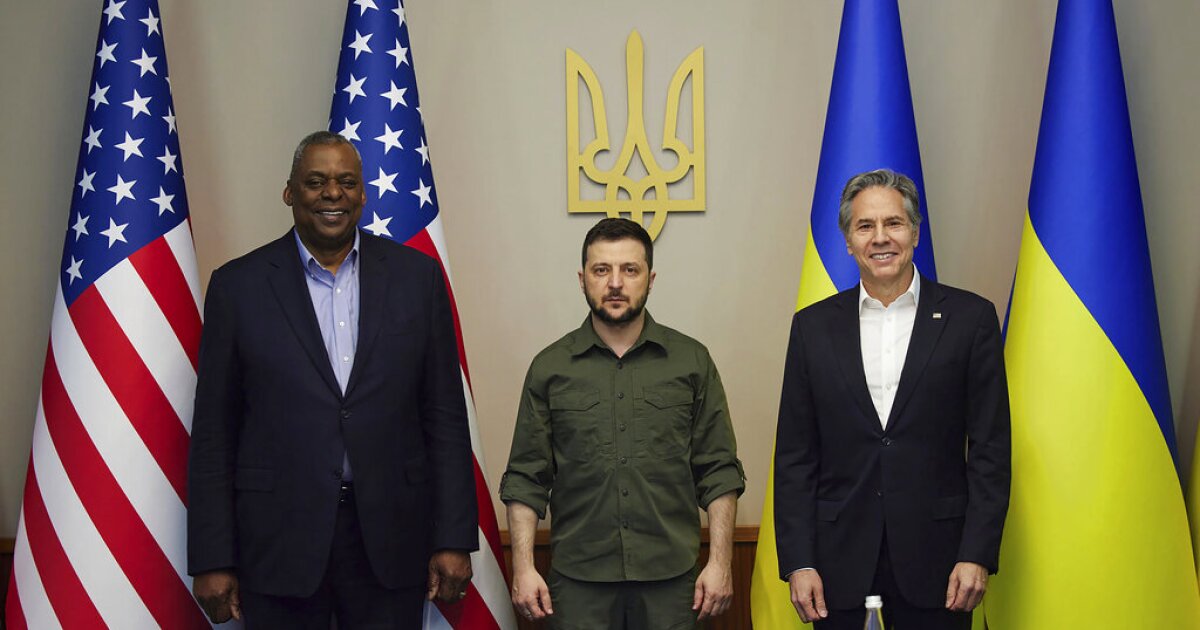

The Biden administration and the Department of Defense spent much of 2022 focusing on how to help Ukraine fend off Russian aggression, with the nature of that assistance changing over the course of the war.
Around the start of the year, the administration had begun warning the world that Russian forces had amassed along Ukraine’s borders. Large-scale military aid did not immediately follow, given the expectations that Russia would quickly overtake Kyiv and get rid of President Volodymyr Zelensky’s government.
Russian forces invaded on Feb. 24, and within a matter of weeks, it became clear that the results weren’t what experts expected. The Russian front lines were bogged down, facing supply shortages and a number of other self-inflicted hardships, before they ultimately retreated from the outskirts of the capital. They then refocused their efforts in the Donbas region of eastern Ukraine, where pro-Russian separatists had been fighting against Ukrainians for nearly a decade.
PENTAGON REPORT DETAILS CHINESE COMMUNIST PARTY’S PLANS FOR MILITARY EXPANSION
The United States has provided Ukraine with 1,600 Stinger anti-aircraft systems and more than 8,500 Javelin anti-armor systems, most of which were in the spring as the fighting in the south and east was much more intense than it has been.
Fast-forward to early fall, and Russia changed its strategy once again, this time using hundreds of Iranian-made drones to target Ukraine’s energy infrastructure ahead of the frigid winter months that are now upon residents. Russian forces have spent months launching these attacks that have put a significant burden on their energy grid, often leaving millions of people without power, heat, or drinkable water.
The White House recently spoke to reporters about the threat the increasingly friendly relationship between Iran and Russia poses not only to Ukraine, but to Iran’s neighbors in the Middle East.
Ukraine’s need for air defense systems became critical during this time, prompting the U.S. to send High Mobility Artillery Rocket Systems (also known as HIMARS) Guided Missile Launch Rocket Systems, and most recently, a plan to provide a Patriot missile defense system.
The Patriot system, which is made by Raytheon, is one of America’s most advanced surface-to-air missile defense systems and is designed to track and intercept incoming ballistic and cruise missiles, though the training takes months and will not provide immediate aid. President Joe Biden’s final decision to provide this aid to Ukraine was announced when Zelensky visited Washington before Christmas.
The U.S. has taken many of the weapons provided to Ukraine from its own stockpiles, setting the defense industrial base up to replace those moving forward.
While the spotlight was on the war, the DOD also released its much-anticipated national defense strategy, which emphasized the threat not from Russia, but from China.
It identified the Chinese Communist Party as posing the “most comprehensive and serious challenge to U.S. national security” given the government’s “coercive and increasingly aggressive endeavor to refashion the Indo-Pacific region and the international system to suit its interests and authoritarian preferences,” whereas it characterized Russia as “an acute threat.”
The threat posed by China was laid out even more starkly in its China Military Power Report, which revealed that China’s operational nuclear warheads stockpile has likely surpassed 400 and that it could exceed 1,500 by 2035 on its current pace.
CLICK HERE TO READ MORE FROM THE WASHINGTON EXAMINER
In China, Xi Jinping extended his stay in office by altering the term limits this fall and rewarding allies with many key positions. In a speech at the Communist Party’s congress, he previewed China’s intended military expansion and threatened that retaking Taiwan by force was not out of the question.
The U.S. and China’s adversarial relationship hit a fevered pitch in August when House Speaker Nancy Pelosi (D-CA) traveled to Taiwan, which angered the Chinese government, while the administration maintained her visit did not constitute a change in U.S. policy toward the island China claims as its own.
U.S. officials accused the Chinese of using the speaker’s visit, in which she became the highest-ranking official to travel there since then-House Speaker Newt Gingrich did in 1997, to “manufacture” outrage to change the status quo.
“What happened a few years ago is that China made a decision in its own policy that that status quo was not something it wanted to live with indefinitely,” Secretary of State Antony Blinken said in October. “And we’ve seen it use more coercive means, more putting pressure on Taiwan to try to get to reunification. And we have a concern that beyond using coercive means, they might actually at some point use force.”




